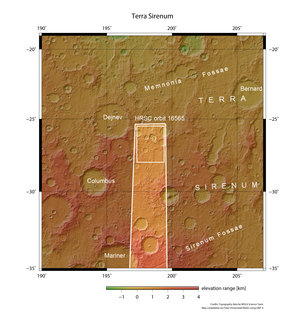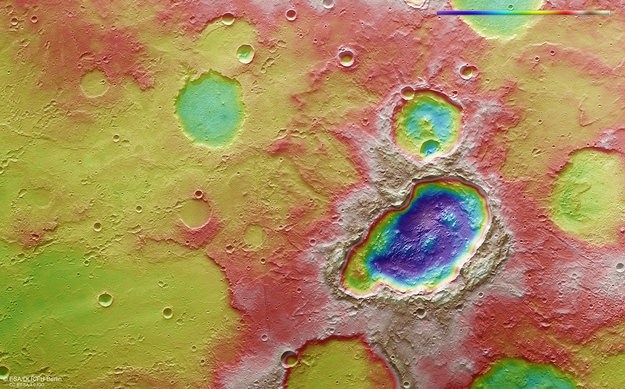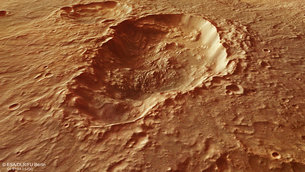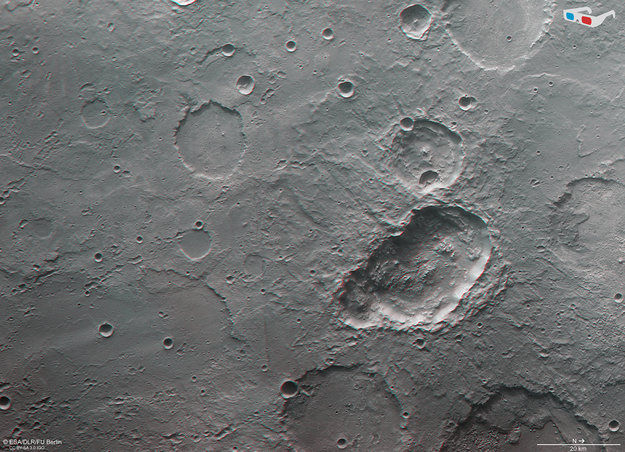.
CRATER TRIPLETS
At first glance this scene may seem nothing out of the ordinary, but the large elongated crater marks the imprint of an impacting body that may have broken into three before it hit Mars.
The images were acquired by ESA’s Mars Express on 28 January, and focus on one of the oldest regions on Mars, Terra Sirenum, in the southern highlands.
The elongated trough at centre stage in this scene is 45 km long and 24 km across. Inspection of the outline suggests that two similarly sized craters and one smaller one have merged to create the footprint-like shape.
Two groups of raised material can be seen in the crater floor. These peaks are created as the initial crater cavity produced by the impact collapses under gravity. The smaller crater also has a hint of a central peak.
Craters like these are thought to have formed at the same time, but there are a number of ideas as to how it happened. For example, an object could have broken into smaller pieces after it entered the atmosphere, striking the surface in quick succession in the same place.
Alternatively, it may have shattered into two or three large pieces upon first contact with the surface, the forward motion of the new fragments leading to the second and third craters.
Another idea is that several closely bound components – like a double or triple asteroid – could also result in such craters.
In any case, the fact that the layers of debris thrown out by the event seem to be continuous and at a uniform thickness around the crater further points to the impacts having taken place at the same time.
In addition, the ejected material is unevenly distributed around the cavity, such that there are two dominant lobes of material on opposite sides, creating a so-called ‘butterfly’ ejecta pattern.
This formation suggests that surface was struck at a low angle, with the motion of the object from top right to bottom left leading to more ejecta downrange.
The ejected material has also spilled into neighbouring craters, notably those at the far right and bottom right in the main image.
The circular crater directly above the elongated crater in the main view is a different kind of triple crater. The two smaller craters – one on the rim and one on the floor – formed at different times, as determined by the laws of superposition. Their rims are well defined, showing that the larger crater had time to form and settle before the smaller ones were formed.
The deformed shape of the rim of the innermost crater may be linked to the formation of the elongated crater.
Numerous other examples of overlapping craters can be found in this scene, testament to the old age of the region.
As well as insights into the cratering history, analysis by Mars Express and NASA’s Mars Reconnaissance Orbiter have detected signatures of clay minerals in layered material seen inside craters and on the plains between them, suggesting the presence of water here over 3.7 billion years ago.
Quelle: ESA





